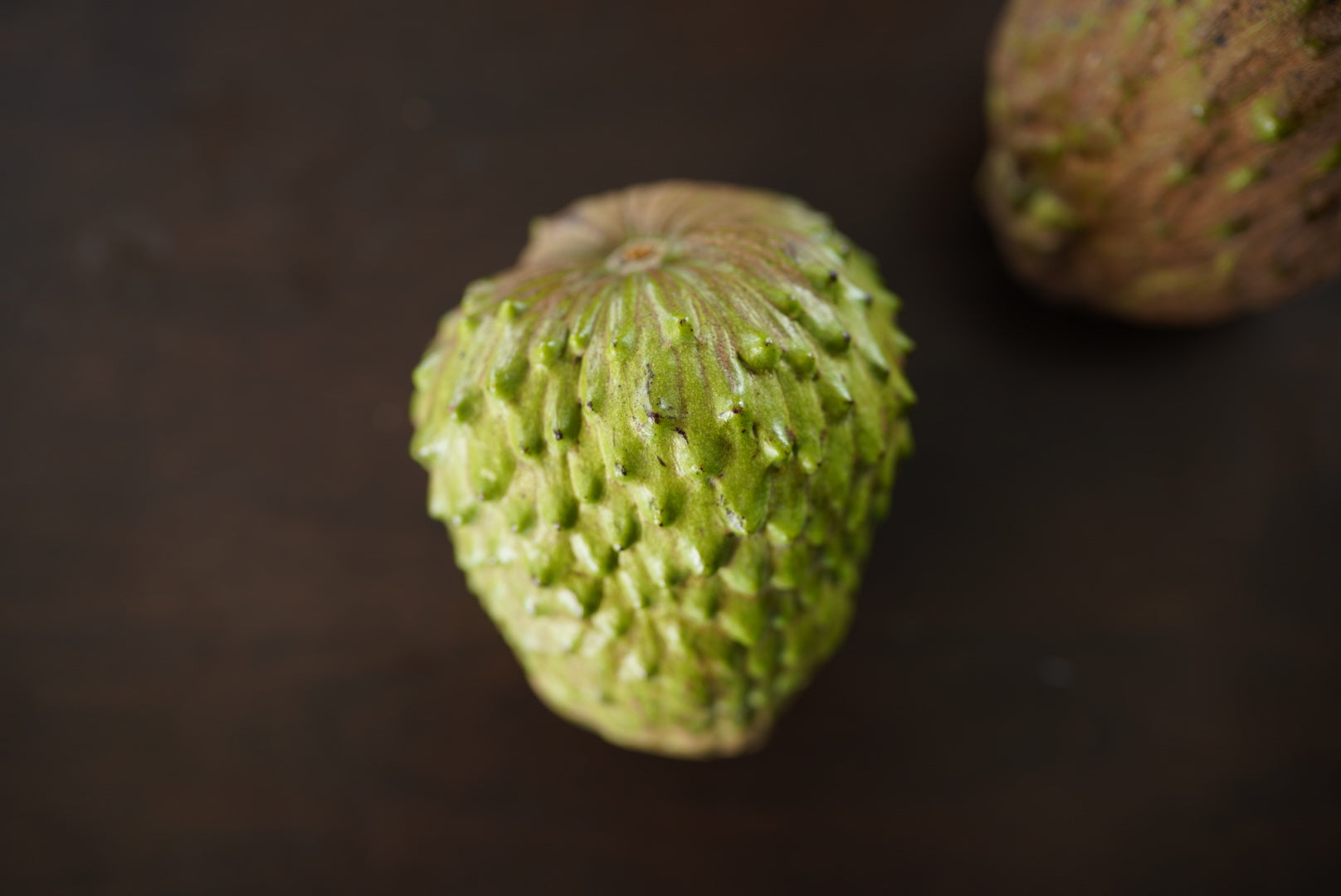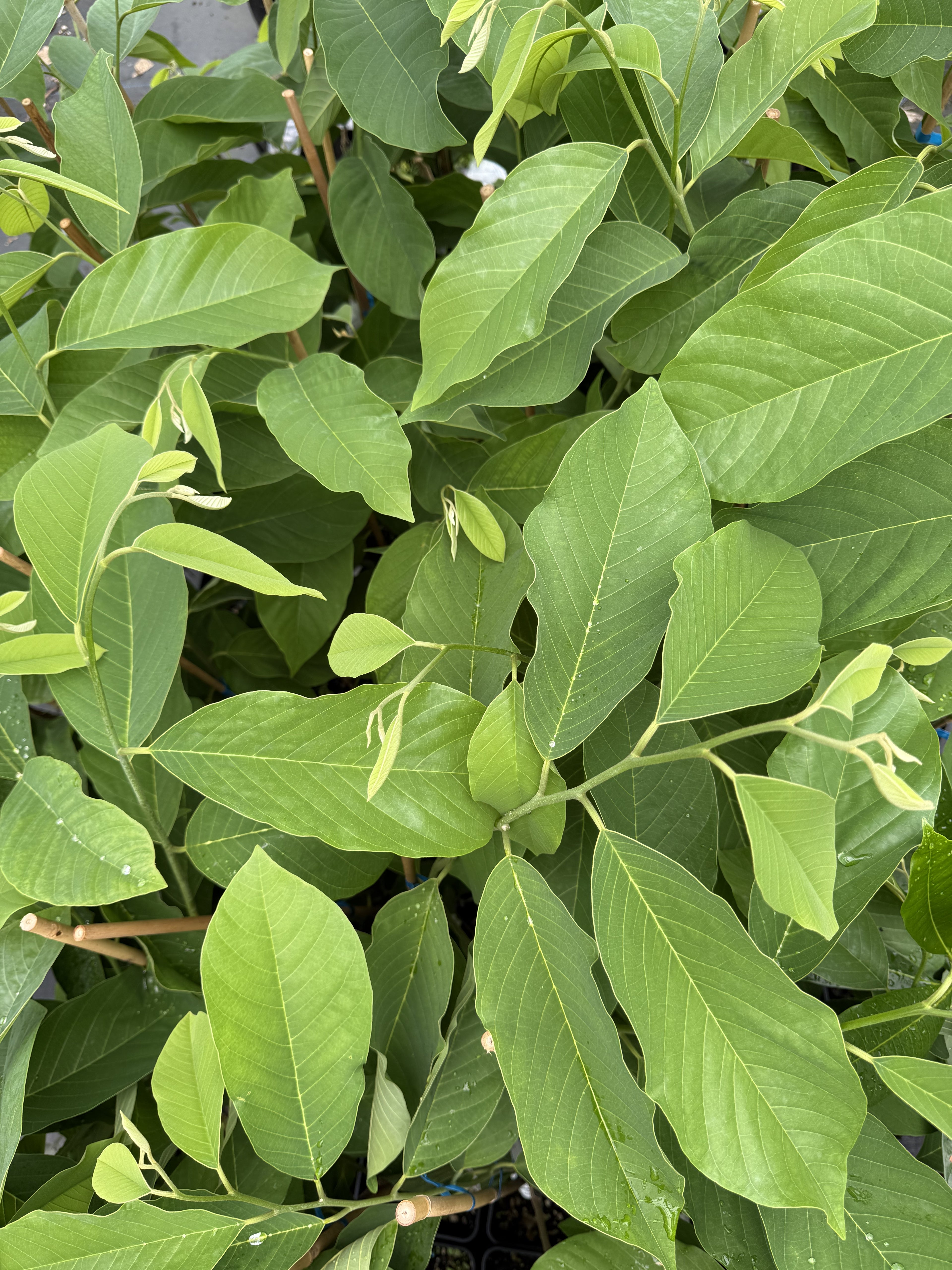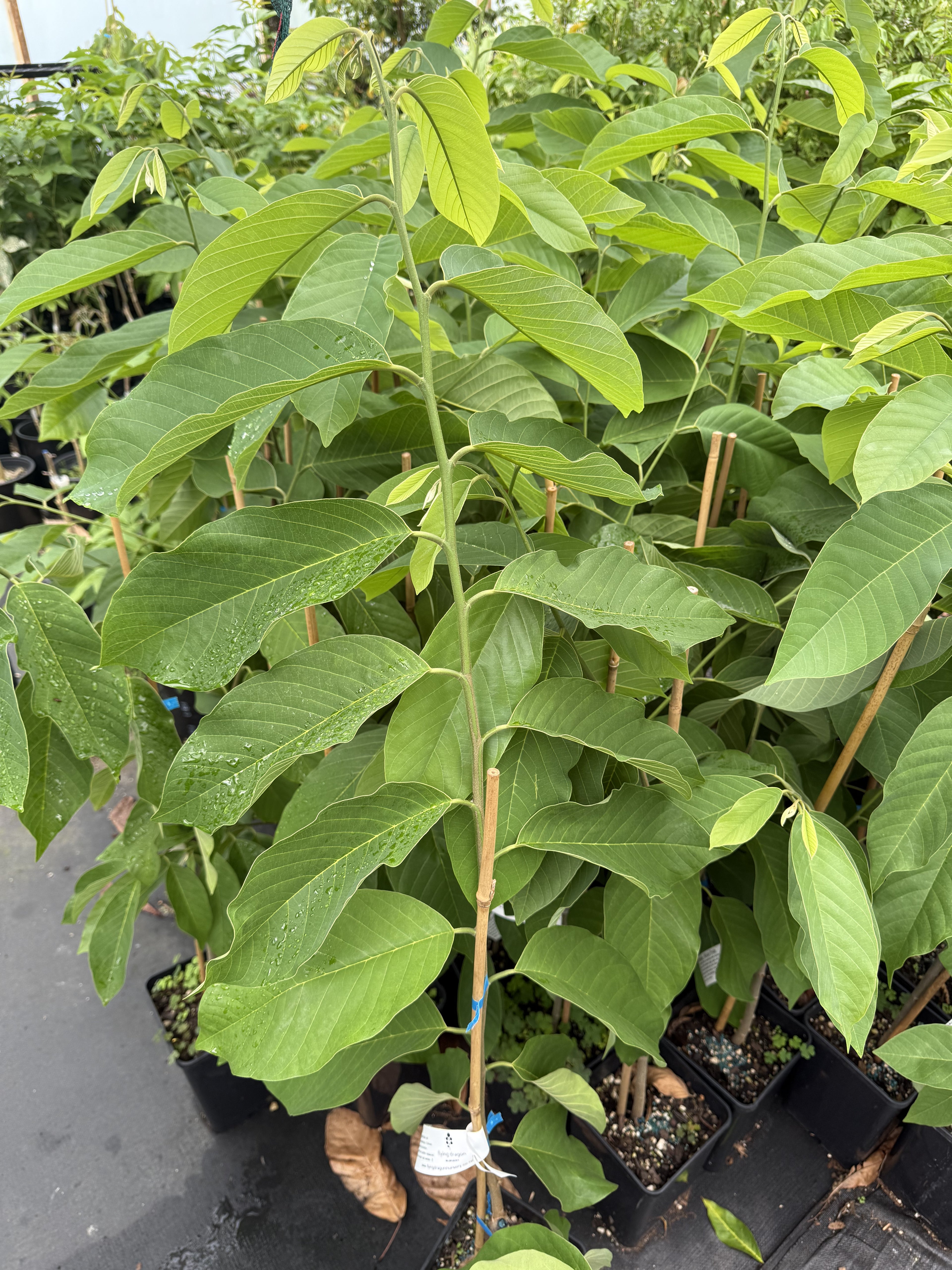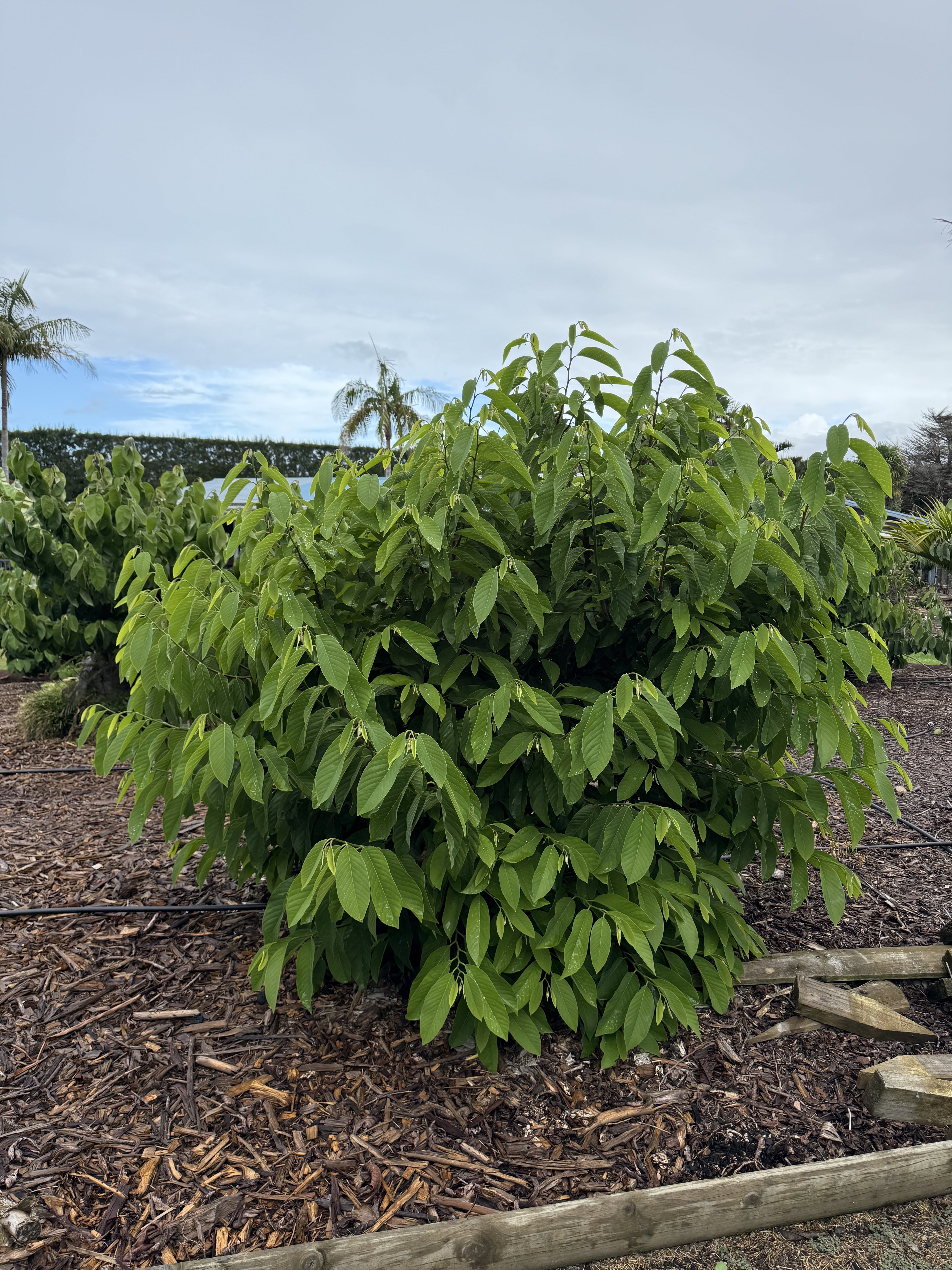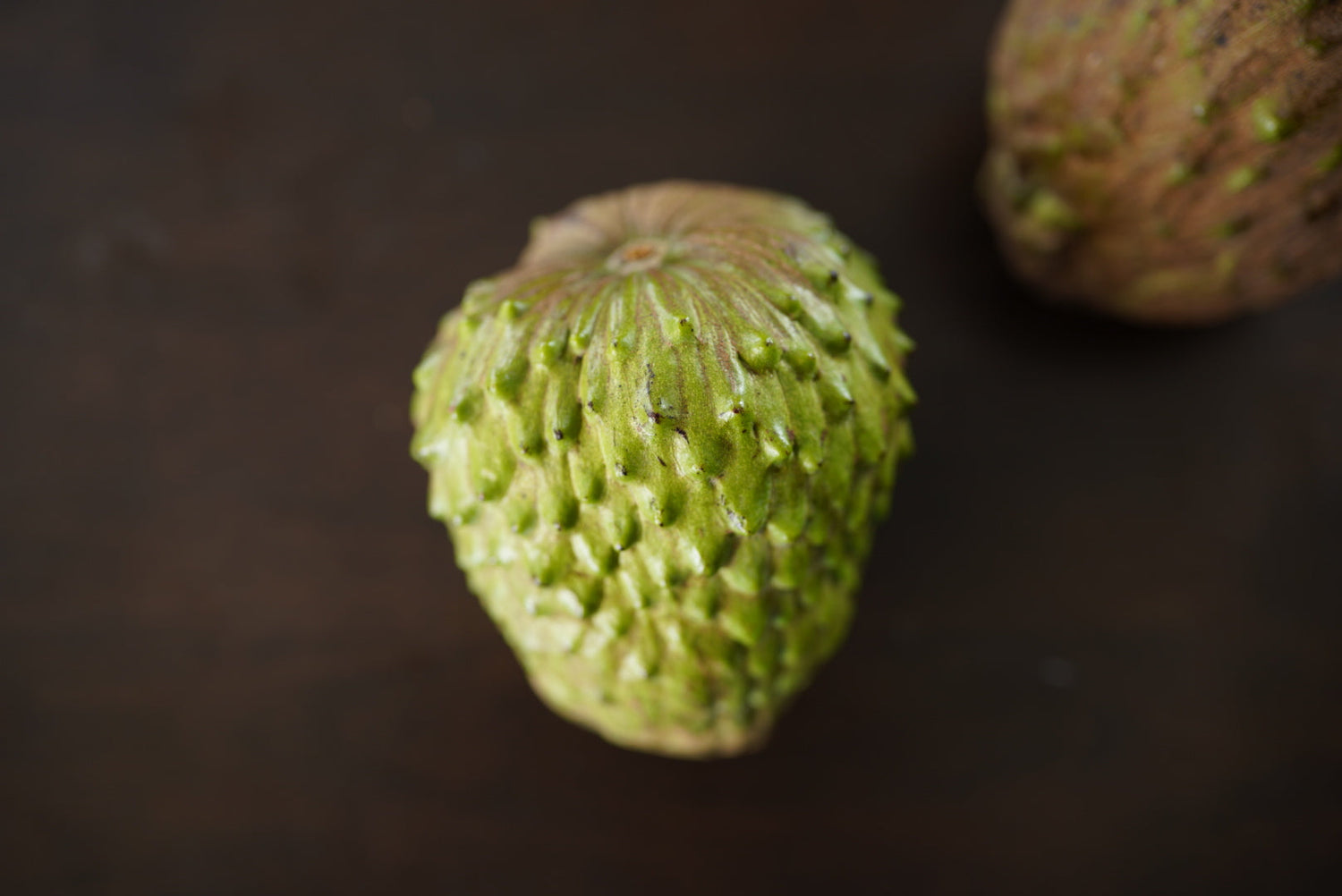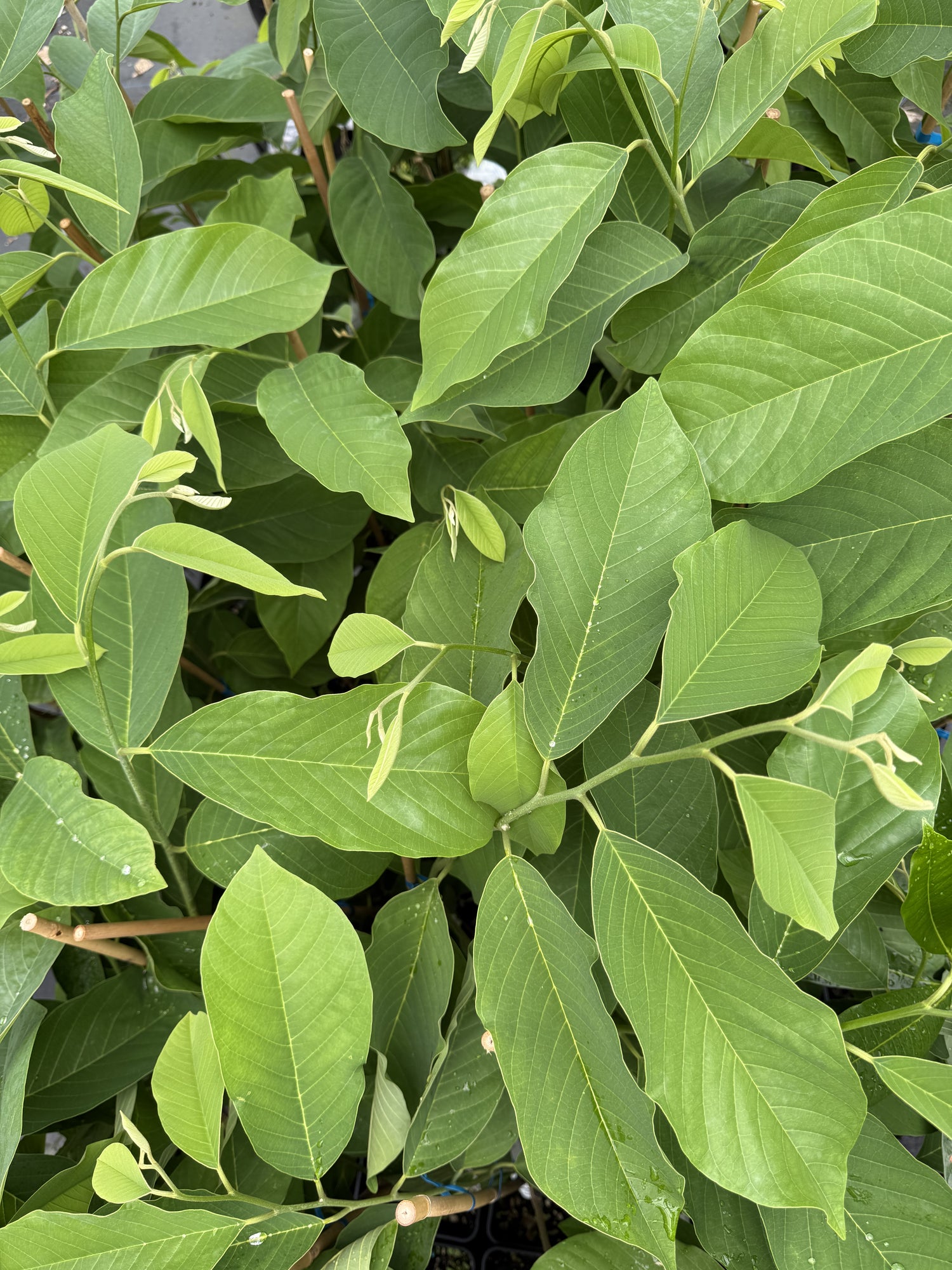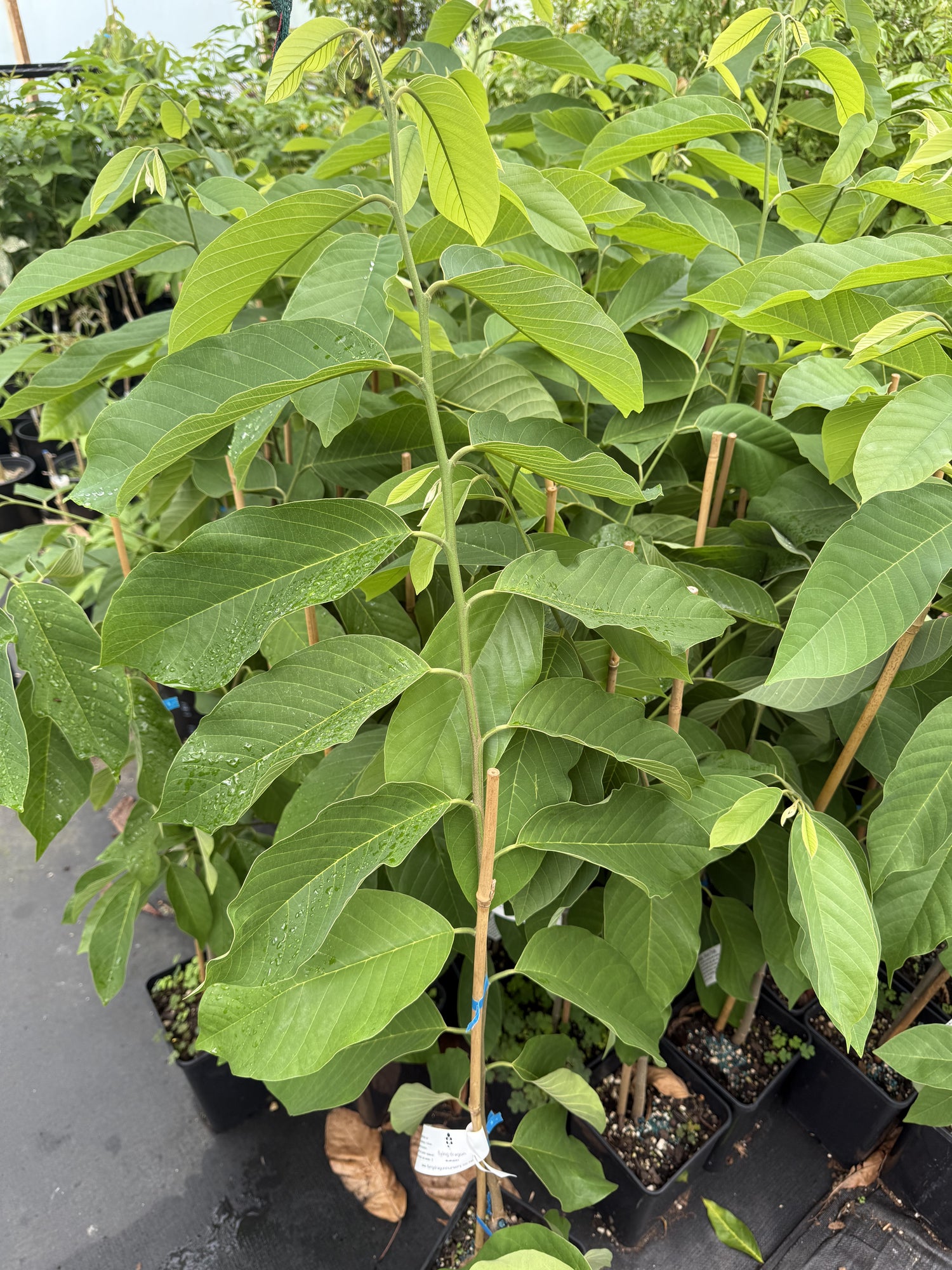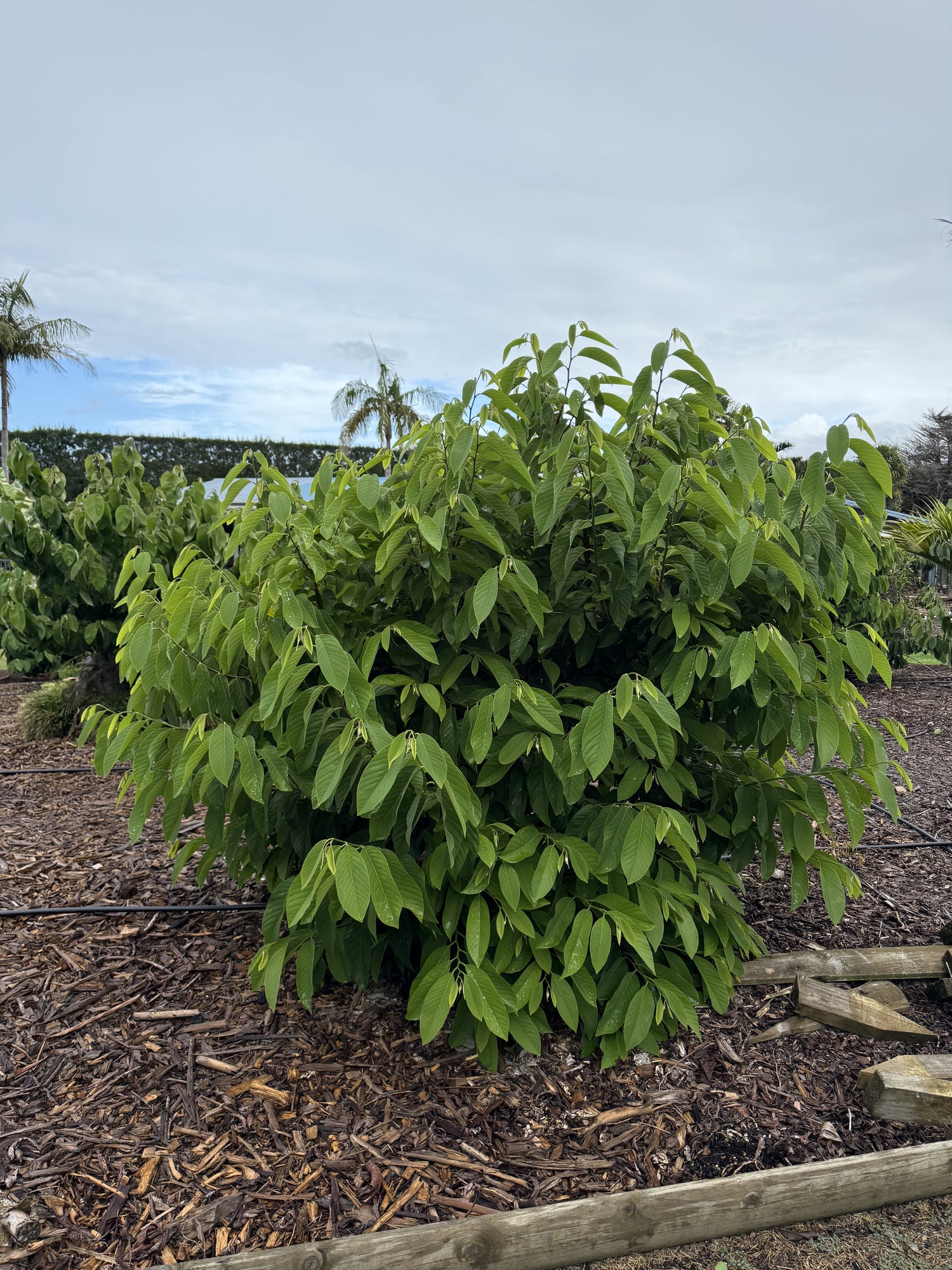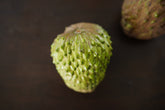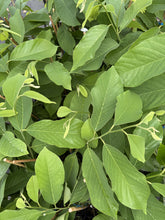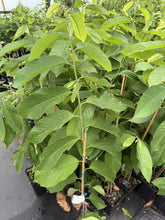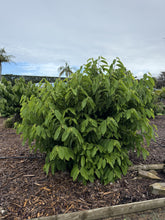Atemoya - African Pride - grafted
- Regular price
-
$99.00 - Regular price
-
- Sale price
-
$99.00
Couldn't load pickup availability
African Pride is a standout variety within the Annona family, known for its rich, tropical flavor that surpasses that of the cherimoya. The fruit is heart-shaped, medium to large in size, and features knobby green skin with custard-like flesh that has a slightly firmer texture than cherimoya. A highly popular commercial variety, African Pride is self-pollinating, produces consistently high yields.
One of the best things about the African Pride atemoya is that it can be easily grown outdoors in the warmer, frost-free regions of New Zealand. In contrast, sugar apples require a greenhouse to thrive in NZ’s climate. If you live in a colder region of New Zealand but still want to grow atemoya, it can be successfully cultivated in a greenhouse. Additionally, it is well-suited for growing in a large pot, making it a versatile choice for home gardeners.
The tree has a stunning ornamental appearance, and when it flowers, it produces an amazing tropical fragrance. If you love custard apples, this is a must-have addition to your garden.
Cherimoya Care Tips
Sun and Shelter: Cherimoyas thrive in a sunny, sheltered spot. They are sensitive to wind, which can damage their somewhat brittle branches. A north-facing wall or fence is ideal as it provides warmth and protection.
Frost Protection: While mature trees can handle a light, brief frost, young trees are very frost-tender. In cooler regions, protect them with frost cloth during winter or consider growing them in a pot that can be moved indoors or into a glasshouse.
Temperature: Cherimoyas need warm summers for good fruit development and some winter chilling hours to fruit successfully.
Soil and Planting
Drainage is Critical: The most important soil requirement is excellent drainage. A free-draining sandy loam or soil with added organic matter like compost is best.
Soil Preparation: When planting, dig a hole twice as wide as the root ball and mix your existing soil with high-quality compost and sheep pellets. In heavy clay soils, plant on a raised mound and consider adding gypsum to improve drainage.
Planting: Plant the tree with the top of the root ball level with the surrounding ground. Gently firm the soil and water in well. Mulch around the base of the plant to help retain moisture and suppress weeds, but keep the mulch a few inches away from the trunk.
Watering : Cherimoyas need consistent moisture, especially during the first year to establish roots and during the growing and fruiting seasons. Water deeply and slowly, allowing the water to soak down to the roots. Avoid Overwatering: While they like moisture, they do not tolerate soggy soil. Allow the top few inches of soil to dry out slightly between waterings. Reduce watering in winter when the tree is dormant.
Fertilising: Feed your cherimoya regularly during the growing season (spring and summer) with a balanced fertiliser. Too much nitrogen can encourage leafy growth at the expense of fruit. A balanced NPK fertiliser or a citrus and fruit tree fertiliser is a good option. Monthly applications of sheep pellets or a liquid organic garden booster can also help with soil health.
Pruning: Prune your cherimoya in late winter or early spring before new growth begins. Pruning helps to maintain a manageable size, remove dead or diseased wood, and open up the canopy for better air circulation and light penetration, which is crucial for fruit production. Training the tree into a vase or pyramid shape can also be beneficial.
